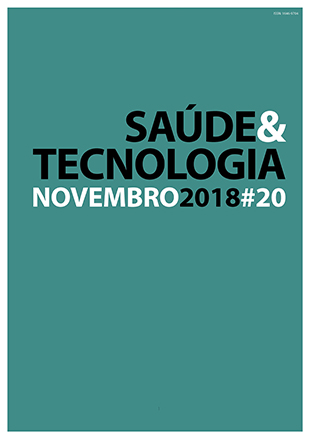Exposure of nuclear medicine technologists during pulmonary ventilation scan
DOI:
https://doi.org/10.25758/set.2141Keywords:
Dose rate, Lung ventilation scintigraphy, Nuclear medicine technologist exposure, Radiation safety and protection, 99mTc-TechnegasAbstract
Introduction – The ventilation technique requires a patient to inhale a radiopharmaceutical. During the procedure, the technologist risks being contaminated with radioactive gas. The aim of the study – To evaluate the exposure to radiation of the nuclear medicine technologists during lung ventilation studies with 99mTc-Technegas® through the monitoring of external contaminations of the hands and face. Methods – Measurement of four nuclear medicine technologists from two different nuclear medicine departments, using a Geiger-Müller counter. We measured the dose rate of the ventilation room background before and after the procedure, with and without the presence of the patient; we measured the dose rate on the hands (with and without the gloves used during the procedure) and on the face (with and without disposable facemask used during the procedure). The data was analyzed using SPSS statistic software, v. 22.0 for Windows. Results – We verified both departments showed higher dose rate values after the ventilation procedure while the patient stills in the room. Department Y showed higher dose rate values with a significate value of 5% on the hands with gloves on, on the gloves used during the procedure, on the face with the disposable mask on, and on the mask. Conclusions – The background dose rate rises with the increase in the number of ventilation studies performed. Gloves are an external barrier against direct contamination of the hands. Face masks reduce the contamination risk on the face.
Downloads
References
Oliveira R, Santos D, Ferreira D, Coelho P, Veiga F. Preparações radiofarmacêuticas e suas aplicações [Radiopharmaceuticals and applications]. Rev Bras Ciênc Farm. 2006;42(2):151-65. Portuguese
Bajc M, Neilly JB, Miniati M, Schuemichen C, Meignan M, Jonson B. EANM guidelines for ventilation/perfusion scintigraphy: Part 1. Pulmonary imaging with ventilation/perfusion single photon emission tomography. Eur J Nucl Med Mol Imaging. 2009;36(8):1356-70.
López Medina A, Miñano JA, Terrón JA, Bullejos JA, Guerrero R, Arroyo T, et al. Calculation of airborne radioactivity in a Technegas lung ventilation unit. Nucl Med Commun. 1999;20(12):1141-5.
Senden TJ, Moock KH, Gerald JF, Burch WM, Browitt RJ, Ling CD, et al. The physical and chemical nature of technegas. J Nucl Med. 1997;38(8):1327-33.
Cyclomedica. Recommended Technegas delivery protocol [website]. Kingsgrove: Cyclomedica; 2013. Available from: http://www.cyclomedica.com/
Lloyd JJ, Anderson P, James JM, Shields RA, Prescott MC. Contamination levels and doses to staff arising from the use of Technegas. Nucl Med Commun. 1994;15(6):435-40.
Smart R. Task-specific monitoring of nuclear medicine technologists' radiation exposure. Radiat Prot Dosimetry. 2004;109(3):201-9.
Conselho da União Europeia. Diretiva 2013/59/EURATOM do Conselho, de 5 de dezembro de 2013. J Of Eur Union. 2014;L(13):1-73.
Costa PF. International basic safety standards. In: Rep S, Santos A, Testanera G, editors. Radiation protection and dose optimization: a technologist’s guide. Vienna: European Association of Nuclear Medicine; 2016. p. 36-45. ISBN 9783902785121
Rep S. Occupational radiation protection. In: Rep S, Santos A, Testanera G, editors. Radiation protection and dose optimization: a technologist’s guide. Vienna: European Association of Nuclear Medicine; 2016. p. 99-106. ISBN 9783902785121
Vanbilloen HP, Bauwens J, Mortelmans L, Verbruggen AM. Reduction of contamination risks during clinical studies with Technegas. Eur J Nucl Med. 1999;26(10):1349-52.
Kawase S, Ohno K, Nakamoto Y, Miyatake H. Safety management of nuclear medicine personnel with visualisation of air dose rate. Radiat Prot Dosimetry. 2015;165(1-4):439-42.
Huff RD, Horwitz P, Klash SJ. Personnel protection during aerosol ventilation studies using radioactive technetium (Tc99m). Am Ind Hyg Assoc J. 1994;55(12):1144-8.
Pityn PJ, King ME, VanderWerf R. Apparent versus real exposures of nuclear medicine technologists during aerosol lung ventilation scanning. Am Ind Hyg Assoc J. 1996;57(2):202-4.
Downloads
Published
Issue
Section
License
Copyright (c) 2022 Saúde e Tecnologia

This work is licensed under a Creative Commons Attribution-NonCommercial-NoDerivatives 4.0 International License.
The journal Saúde & Tecnologia offers immediate free access to its content, following the principle that making scientific knowledge available to the public free of charge provides greater worldwide democratization of knowledge.
The journal Saúde & Tecnologia does not charge authors any submission or article processing charges (APC).
All content is licensed under a Creative Commons CC-BY-NC-ND license. Authors have the right to: reproduce their work in physical or digital form for personal, professional, or teaching use, but not for commercial use (including the sale of the right to access the article); deposit on their website, that of their institution or in a repository an exact copy in electronic format of the article published by Saúde & Tecnologia, provided that reference is made to its publication in Saúde & Tecnologia and its content (including symbols identifying the journal) is not altered; publish in a book of which they are authors or editors the total or partial content of the manuscript, provided that reference is made to its publication in Saúde & Tecnologia.







